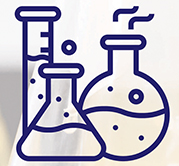Power tool batteries are the devices that supplement various instruments and tools such as circular saws, band saws, hammer drills, impact wrenches, impact drivers, and crimpers. These batteries provide greater working efficiency to the users on account of their easier handling due to mobility. They also mitigate shock hazards and reduce trips. According to a report produced by the National Council on Compensation Insurance (NCCI), these batteries significantly reduced the compensation claims of workers in the last few years.
A key factor fueling the surge in the sales of power tool batteries is the growing usage of various cordless instruments in the construction and automotive industries and the surging utilization of power tools in residential applications across the world. The construction and automotive industries are increasingly incorporating the use of mobile equipment for enhancing the efficiency of the manufacturing processes and mitigating shock and tripping hazards. Besides this, the usage of power tools is rapidly increasing in residential applications mainly because of the rising labor costs.
The sharp rise in the labor costs in many countries has increased the popularity of the do-it-yourself (DIY) approach amongst the people, with regards to fixing household appliances and setting up furniture and other home accessories, which has, in turn, caused a sharp surge in the sales of user-friendly power instruments. Additionally, the increasing usage of cordless power instruments in various household renovation and remodeling projects, especially in the developed nations, is tremendously boosting the requirement of power tool batteries.
Due to the aforementioned factors, the global power tool batteries market is predicted to exhibit rapid expansion in the coming years. Nickel–metal hydride, lithium-ion, and nickel-cadmium are the most commonly used types of power tool batteries throughout the world. Out of these, the utilization of the lithium-ion batteries is presently being observed to be the highest in power tools, primarily due to their longer lifespans on one charge and lesser vulnerability to voltage depression, which is a common occurrence in the nickel-cadmium power tool batteries.
The other factors contributing toward the growing popularity of lithium-ion batteries are their lower maintenance requirements and lighter weights as compared to the other batteries. In addition to this, these batteries experience fewer occurrences of self-discharge and are thus used more widely than the other batteries. Power tool batteries are extensively used in commercial, industrial, and residential sectors, out of which, the usage of these batteries has been historically higher in industrial and commercial applications than the residential ones all over the globe.
The main reason behind the large-scale utilization of these batteries in the industrial and commercial sectors is the widespread usage of power tools in cutting, drilling, grinding, sanding, metalworking, driving (fasteners), polishing, and various other processes. Furthermore, the soaring investments being made by the governments of several countries in infrastructural development and construction activities are pushing up the demand for these tools. Geographically, the power tool batteries market is advancing rapidly in North America, as per the findings of the market research firm, P&S Intelligence. This is ascribed to the increasing automobile sales and expanding manufacturing industry in the region.
Hence, with the growing usage of power tools in various residential, industrial, and commercial applications, the sales of power tool batteries will boom all over the world in the forthcoming years.

















